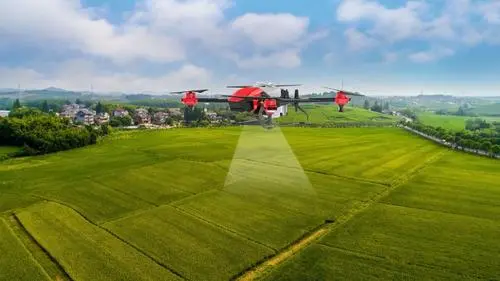On August 15th, the on-site observation and seminar of the National Key R&D Plan “Yangtze River Basin Renewable Rice Production Capacity Enhancement and High Quality and Efficient Technology Research and Integration Demonstration” project was held in Datonghu District, Yiyang City. During the meeting, Huazhong Agricultural University organized experts from Anhui Academy of Agricultural Sciences and other units to test the yield of the first season of ratoon rice grown by the unmanned (young) smart farm in Datong Lake. The results showed that the highest yield of regenerated rice in the first season was 830.7 kilograms per mu, with an average yield of 788.2 kilograms per mu, indicating a bumper harvest.
Datong Lake Regenerated Rice Unmanned (Young) Smart Farm is the world’s first Regenerated Rice Unmanned (Young) Smart Farm, which was put into use earlier this year. This production test is the first on a farm. With the support of the Datong Lake District Management Committee, the farm was jointly built by Hunan Hongshuo Biotechnology Co., Ltd., together with the scientific research team of Luo Xiwen, a member of the CAE Member, a professor of South China Agricultural University, Peng Shaobing, a professor of Central China Agricultural University, and Tang Qiyuan, a secondary professor of Hunan Agricultural University, It is one of the implementation sites of the “14th Five Year Plan” national key research and development plan “Yangtze River Basin Renewable Rice Production Capacity Improvement and High Quality and Efficient Technology Research and Integration Demonstration” project. The project was launched in November 2022, with a 4-year implementation period and the participation of 10 units from 5 provinces and cities. The aim is to enhance the production capacity of recycled rice in the Yangtze River Basin and promote the industrialization of recycled rice.
Regenerated Rice Unmanned (Young) Smart Farm integrates “agricultural machinery+agronomy+intelligence” and utilizes the Zhonglian Smart Agriculture Platform and the South China Agricultural University Unmanned Farm Agricultural Machinery Management Cloud Platform to create a localized intelligent agricultural brain and digital agriculture display template (localized software platform+localized digital rice planting scene display), achieving full process data collection and analysis of rice production, intelligent decision-making of agricultural instructions, and intelligent execution of agricultural machinery operations, The entire process of rice cultivation, planting, management, harvesting, production, supply, and sales is fully covered through traceability. In 2023, we will focus on technologies such as reducing first season rolling during the operation of unmanned agricultural machinery, mechanized weed control and pesticide reduction, and drone variable rate fertilization to increase weight loss and efficiency.
Xiong Jiaojun, Chairman of Hunan Hongshuo Biotechnology Co., Ltd., stated that the biggest problem with regenerated rice is how to reduce rolling during mechanical harvesting. So, we use unmanned (few people) smart farm technology for line to line operations, set operation paths and trajectories, and minimize rolling as much as possible. The rolling degree of conventional machinery may reach 40%, and through the control of unmanned farms, the rolling can be reduced to at least 20%, thereby improving the yield of regenerated rice during the regeneration season.
Tang Qiyuan, an expert in the national rice industry technology system, the leader of the provincial expert group on Hunan recycled rice, and a second level professor at Hunan Agricultural University, stated that due to the use of automatic navigation technology for agricultural machinery based on Beidou positioning in unmanned (few people) smart farms, the horizontal and vertical errors of straight driving are significantly reduced. Compared with manual driving operations, it improves the straightness of the planting line and is conducive to subsequent agricultural machinery operations, Therefore, it can reduce rolling. Especially for unmanned harvesting, in addition to reducing labor and improving work efficiency, it can also achieve straight harvesting, reduce rolling losses, and balance pile height, which is conducive to improving the uniformity and yield of seedlings during the regeneration season. He predicted that with proper management, the second season yield of the demonstration plot for regenerated rice in the Datong Lake region will reach 350-400 kilograms per mu. With the continuous maturity of the technology related to unmanned (young) smart farms for regenerated rice, it is expected to be promoted in large grain farmers in the future.







Please sign in to comment
register